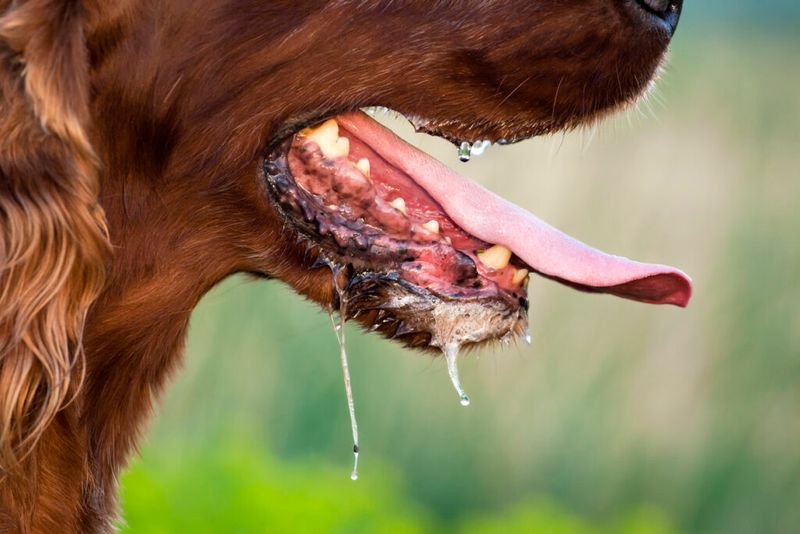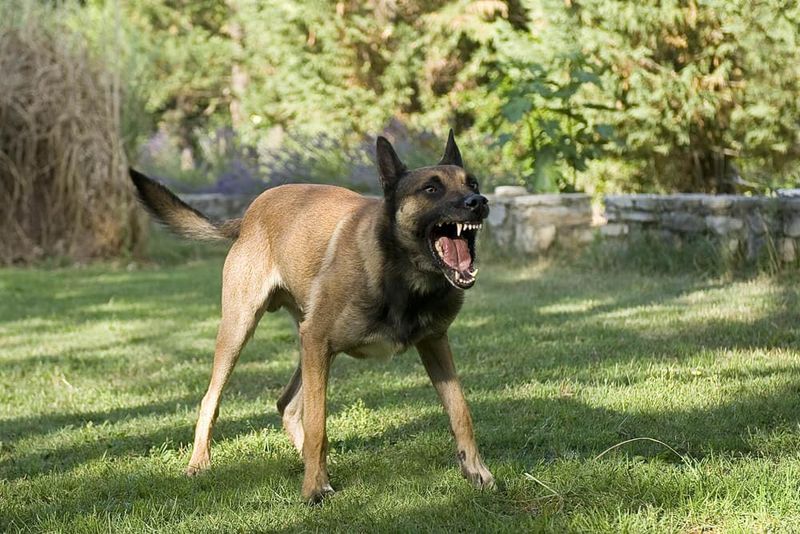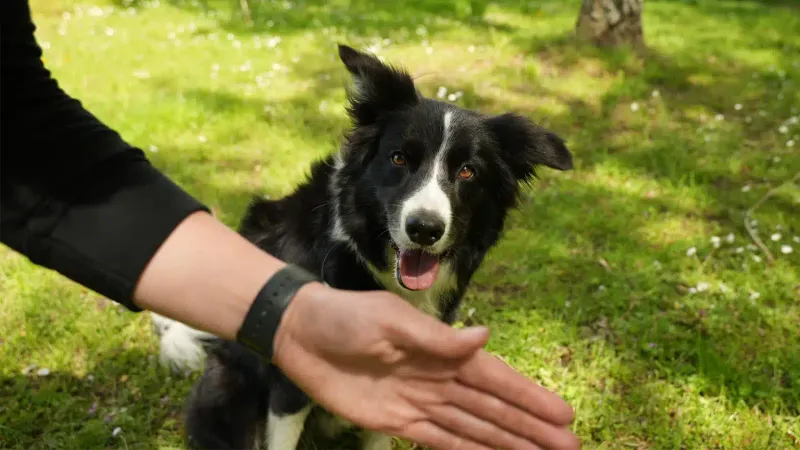Dogs, our loyal companions, are capable of expressing a wide array of emotions, much like humans. However, the signs of their unhappiness can often be subtle and easy to miss. This blog post explores 16 subtle signs that your dog may be unhappy and provides actionable advice on how to help them feel better.
Loss of Appetite
If your dog is suddenly uninterested in their meals, it might be more than just a picky eater day. Often, a loss of appetite can indicate underlying stress or discomfort in your furry friend.
Consider if there have been any changes in their environment, such as new pets or disruptions in their routine. These factors can contribute to a dog’s reluctance to eat.
To help, try maintaining a consistent feeding schedule and offering a variety of healthy foods. If the issue persists, consulting a veterinarian is advisable to rule out any health concerns.
Excessive Licking
Dogs often lick themselves, but when it becomes excessive, it could be a sign of anxiety or discomfort. This behavior might be soothing for them, like a child sucking their thumb.
Observe if the licking is focused on a particular area, as this might indicate a localized problem like an itch or pain. Alternatively, it might be a symptom of boredom or stress.
To address this, ensure your dog has enough physical and mental stimulation. Interactive toys and regular walks can help. If the licking continues, a vet check is recommended.
Increased Vocalization
Has your usually quiet dog turned into a chatterbox? Increased barking, whining, or howling can be a form of canine communication, signaling distress or discomfort.
Consider recent changes in their environment. Have you been spending less time at home, or has a new pet arrived? These factors might cause your dog to express unease through their voice.
To help, try spending quality time with your pet, offering reassurance and engagement. Puzzle toys or obedience training can also redirect their focus positively.
Avoidance Behavior
When your dog starts avoiding interactions or hiding, it can be a subtle cry for help. This might occur when they feel overwhelmed or scared due to loud noises or unfamiliar visitors.
Create a safe space where they can retreat and feel secure, away from stressors. This can be a comfy bed in a quiet room where they know they won’t be disturbed.
Gradually reintroduce them to social situations with positive reinforcement, ensuring they associate these experiences with safety and comfort.
Destructive Chewing
Destructive chewing can be more than just a nuisance; it’s often a sign of frustration or anxiety in dogs. This behavior might be their way of coping with stress or boredom.
Identify any recent changes in your dog’s routine or environment that might have triggered this behavior. Providing plenty of alternatives, like chew toys, can help redirect this behavior.
Engaging them in physical activities and training sessions can also reduce their stress and channel their energy positively.
Changes in Sleep Patterns
If your dog is sleeping more than usual or struggling to rest, it might be a sign of distress or health issues. Dogs, much like humans, can experience changes in sleep patterns due to stress or discomfort.
Monitor their sleeping environment to ensure it’s comfortable and free from disturbances. A calm, quiet space can make a significant difference.
If changes in sleep persist, consider consulting a vet to rule out medical concerns, as sleep issues can sometimes indicate underlying health problems.
Pacing or Restlessness
Notice your dog pacing back and forth? This restlessness can indicate anxiety or nervousness, often triggered by changes in their environment or routine.
Try to identify any recent changes that might be causing distress, such as a new pet or family member, and work to create a calm, predictable environment.
Engage your dog with activities like playtime or training sessions to channel their energy and ease their anxiety. Consistency in daily routines can also be comforting to your furry friend.
Loss of Interest in Play
If your dog suddenly loses interest in playing with their toys, it could be a sign of depression or discomfort. Play is a vital part of a dog’s life, providing exercise and mental stimulation.
Reflect on any changes in their daily life that might have impacted their mood. Reintroducing play gradually and exploring new toys or games can reignite their interest.
Make sure to spend quality time playing with your dog, as your engagement can significantly enhance their mood and well-being.
Frequent Urination
Frequent urination may suggest stress or underlying health issues in dogs. It can be a sign of anxiety or a reaction to changes in their environment.
Pay attention to other behavior patterns, such as increased thirst or changes in diet, which might accompany this sign.
If you notice this behavior, it could be helpful to consult a veterinarian to rule out medical concerns. Maintaining a consistent routine and reducing stressors in their environment can also help manage this issue.
Excessive Shedding
All dogs shed, but if it becomes excessive, it might be a sign of stress or poor health. Anxiety and environmental changes often contribute to increased shedding.
Ensure your dog is receiving a balanced diet and regular grooming to maintain their coat health. Supplements and a rich diet can improve overall skin and fur condition.
If the shedding persists, consider visiting a vet to rule out allergies or other underlying health issues.
Changes in Body Language
A dog’s body language can speak volumes about their emotional state. Signs like a tucked tail, lowered ears, or avoiding eye contact might indicate unhappiness or fear.
Observe their reactions in different environments to identify potential stressors. Removing or minimizing these stressors can help improve your dog’s comfort and confidence.
Positive reinforcement and gentle encouragement can help them regain trust and feel more at ease in their surroundings.
Excessive Drooling
While some breeds naturally drool, excessive drooling may be a sign of stress or discomfort. It can occur in situations where the dog feels anxious or is experiencing motion sickness.
Identify triggers that might be causing this reaction, such as car rides or unfamiliar environments, and work to desensitize your dog gradually.
Consulting a vet can provide guidance and rule out any medical conditions that might be causing the heightened drooling.
Aggression or Irritability
A usually gentle dog displaying aggression or irritability might be dealing with stress or fear. This change in behavior can be concerning and requires sensitive handling.
Evaluate recent changes in their environment or routine that might have triggered this behavior. Providing a calm and secure space can help reduce their stress.
Professional training or a behaviorist’s guidance might be beneficial in managing aggression effectively and safely.
Panting for No Reason
Panting is normal for dogs, but if it occurs without physical exertion or heat, it might indicate anxiety or stress. This behavior could be a result of environmental changes or underlying health issues.
Monitor situations where this occurs to identify possible triggers, and try to maintain a calm and consistent environment.
If the panting persists, consulting a veterinarian is advisable to ensure there are no serious health concerns at play.
Ignoring Commands
If your dog starts ignoring commands they usually obey, it could indicate stress or a lack of motivation. This behavior might also signify a need for more stimulating activities to keep them engaged.
Consider incorporating interactive training sessions that challenge their mind and offer positive reinforcement. This approach can help restore their interest in obeying commands.
If motivation isn’t the issue, consider seeking professional training advice to address potential behavioral concerns.
Weight Changes
Sudden weight loss or gain in your dog can be a sign of unhappiness, stress, or an underlying health issue. It’s essential to monitor any changes closely.
Evaluate their diet and exercise routine to ensure they are receiving balanced nutrition and adequate physical activity. Stress or depression might cause changes in appetite, leading to weight fluctuations.
Consult with a veterinarian to rule out any medical conditions and to receive guidance on maintaining a healthy weight for your furry friend.
















